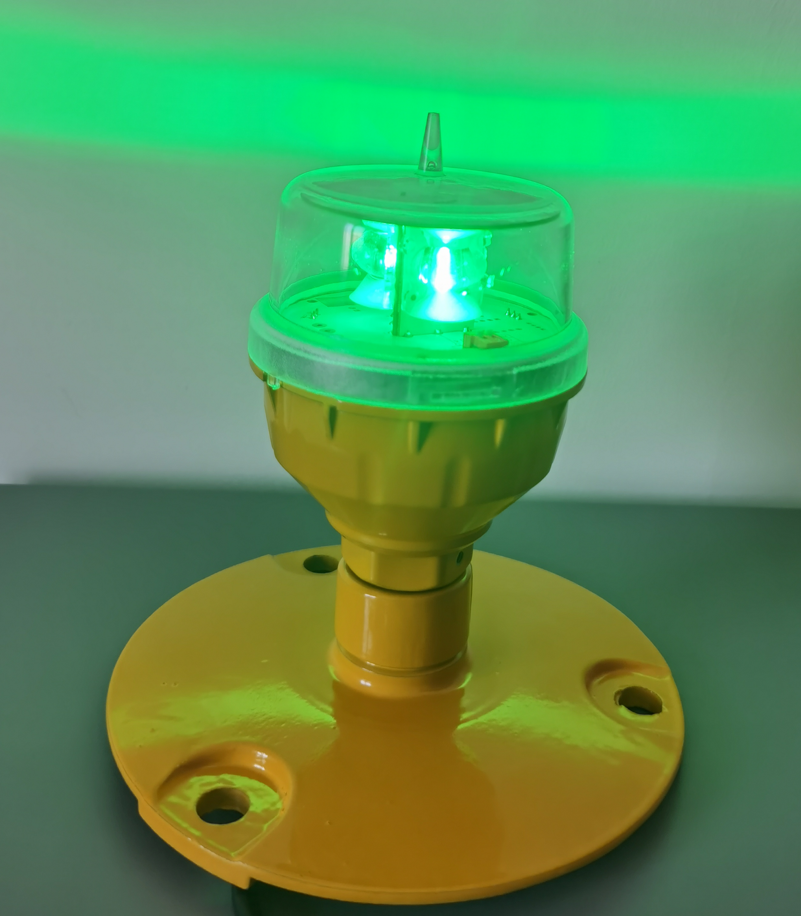In the realm of helicopter operations, helipad lights are far more than simple illuminations. They form a crucial visual language that pilots rely on to navigate safely. The colors of these lights carry specific meanings and play distinct roles in ensuring smooth and secure landings. Let's explore the significance behind the hues of helipad lights.
The Basics of Helipad Light Colors
Helipad lights typically feature a combination of white, green, and red, each with its own unique function. These colors are not chosen randomly but are carefully standardized to provide clear and consistent signals to helicopter pilots worldwide.
White Lights
White lights on a helipad are often the most prominent. They serve as the primary source of illumination, making the entire helipad visible from a distance. The bright white light cuts through darkness and poor weather conditions, such as fog or rain, ensuring that the landing area is easily distinguishable. For example, in a large hospital helipad, white perimeter lights outline the entire landing zone, allowing pilots to quickly identify the boundaries even during the darkest nights.

Moreover, white lights can be used to indicate the centerline of the helipad. This helps pilots align their helicopters accurately during the approach, ensuring a straight and stable landing. A series of white lights along the centerline acts as a visual guide, leading the pilot directly to the optimal touchdown point.
Green Lights
Green lights on a helipad are associated with the "go - ahead" signal. They are usually placed at the touchdown and take - off area (TLOF). When a pilot sees a green light at the TLOF, it indicates that the area is clear and it is safe to land or take off. This is especially important in busy heliports or in situations where there may be multiple helicopters in the vicinity. For instance, at a heliport near an oil rig in the ocean, green lights give the all - clear to incoming helicopters, allowing them to land without hesitation in a potentially dangerous environment.
Red Lights
Red lights on a helipad serve as a warning or "stop" signal. They are often used to mark areas that are unsafe or restricted. For example, red lights may be placed around obstacles near the helipad, such as a water tank or a communication tower. If a pilot approaches the helipad and sees red lights in a particular area, it signals that they should avoid that space and adjust their approach accordingly. Red lights can also be used to indicate the edge of the helipad in certain situations, providing an extra layer of safety by clearly defining the boundaries.
| what color are helipad lights |
| what color are helipad light |
Color Combinations and Their Meanings
In addition to the individual colors, the combinations of helipad lights also convey important information. For example, a combination of white and green lights can be used to indicate a specific approach path. The white lights may mark the general approach route, while the green lights highlight the final segment of the approach, guiding the pilot to the exact landing spot.
Some helipads also use a sequence of flashing lights in different colors to communicate special instructions. A rapid - flashing red light, for instance, could indicate an emergency situation on the helipad, such as a mechanical issue with the lighting system or a hazard on the landing area. Pilots are trained to recognize these color - coded signals and respond appropriately.
The Importance of Standardized Color Codes
The standardization of helipad light colors is of utmost importance. It ensures that regardless of the location of the heliport, whether it's in a remote mountainous region or a busy urban center, pilots can rely on the same set of visual cues. This consistency reduces the chances of miscommunication and increases safety. For example, an international helicopter pilot flying to different countries can expect the same color - based signals at each heliport, making the landing process more predictable and less error - prone.
In conclusion, the colors of helipad lights are a carefully designed system that plays a vital role in helicopter operations. White, green, and red lights, along with their combinations, provide pilots with essential information about the helipad's location, safety status, and approach instructions. As helicopter technology continues to evolve, the significance of these color - coded lights remains constant, serving as a reliable visual guide for safe take - offs and landings.